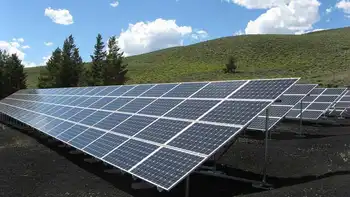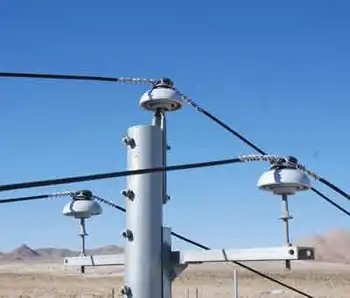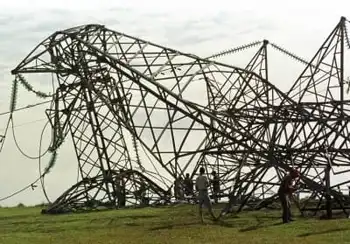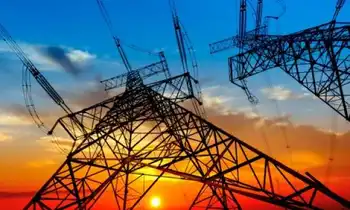Britain, like Ontario, must soon decide whether to invest billions in more atomic energy
HINKLEY POINT, ENGLAND - On a day when thick fog obscures the nuclear power stations on the Somerset coast, all that hints at the disputed future of the industry is the loud buzz of generated electricity.
The Hinkley Point A station is first to fully appear as the fog slowly lifts — two square, blue buildings encasing shut-down reactors that will glow radioactive for thousands of years. The grey cement mass of B station then emerges. It is scheduled to produce electricity until it's mothballed in 2011, unless safety concerns over cracks in the reactors' graphite bricks force an earlier shutdown.
Both these sights are troubling enough for Jim Duffy, a local resident who for almost two decades has campaigned against nuclear power on this 20-hectare site on the Bristol Channel in southwestern England.
But perhaps his worst fear is for what else a fading fog may one day reveal: a third nuclear power station on what is now a vacant field. The spot is considered a candidate if the government backs the building of new nuclear stations.
Duffy, 52, strikes a weary note when considering the tough campaign ahead against a nuclear industry that until recently seemed all but beaten.
"I don't relish it," says Duffy, whose safety campaigns helped shut the 35-year-old A station in 1999. "I'd rather the whole thing just die down. But we'll have a go, if we have to."
British Prime Minister Tony Blair this week announced an energy policy review that "will include specifically the issue of whether we facilitate the development of a new generation of nuclear power stations."
The review will address the same sort of question the Ontario Power Authority is expected to answer in a report next week about the province's energy situation: how to secure clean electricity supplies as existing nuclear plants age and international treaties force a cutback in fossil fuel emissions that contribute to global warming.
There's much speculation that both Ontario and Britain will opt for the same controversial choice: adding new nuclear plants to an electricity generating mix.
Atomic Energy of Canada Ltd., a federal Crown corporation, builds the CANDU nuclear reactor used in Canada. Company officials, in London this week flogging the CANDU, estimate the potential price tag for eight reactors in the U.K. at $16 billion.
Blair got a taste of the battle ahead when two Greenpeace protestors forced him to change the venue for his energy announcement. The protestors managed to climb to the rafters of a London business centre, shower the audience with bits of paper that read, "Nuclear: Wrong Answer," and unfurl banners with the same message.
Blair is widely reported to personally back the nuclear option, but it risks splitting his Labour party and further testing a prime minister weakened by repeated internal revolts.
The review, headed by Energy Minister Malcolm Wicks, will report early next summer. But it already marks a major shift in the government's position.
Only two years ago, a government energy white paper concluded that costs and uncertainty about how to dispose of radioactive waste made nuclear power "an unattractive option."
It urged an increase in renewable energy sources, including wind turbines and tidal waves, as a key way to reduce emissions of "greenhouse gases."
Most scientists believe carbon dioxide emissions are increasing global warming, melting ice caps, raising sea levels and fuelling climate changes that invite ecological and economic disasters.
The white paper also stressed energy efficiency — better insulated buildings and energy-saving appliances, for example — and cutting emissions from vehicles and airplanes, which account for a quarter of Britain's CO{-2} discharges.
Government ministers have struggled to explain what has changed to suddenly put nuclear power back on the policy track. Critics insist it has more to do with the increased lobbying clout of the nuclear industry and Blair's personal backing than anything else.
But dwindling North Sea gas reserves have made Britain an earlier than expected net importer of a resource whose price increased sharply in October.
"Round the world, you can sense feverish rethinking," Blair said this week. "Energy prices have risen. Energy supply is under threat. Climate change is producing a sense of urgency."
At issue are Britain's 12 nuclear power stations — out of an original fleet of 19 — that generate about 23 per cent of the country's electricity. All but three of the 12 stations, most of which are privately owned, will be closed by 2014. The rest are scheduled to shut down by 2035. The closings raise the question of the best, low-carbon-emitting way to fill the looming "electricity gap."
Greenhouse gases are produced during the mining of uranium used to fuel nuclear reactors and the building of nuclear plants. But a nuclear reactor produces virtually no carbon dioxide when it generates electricity.
Most of Britain's electricity comes from burning fuels that contribute to global warming — 38 per cent from gas, 32 per cent from coal and 4 per cent from oil. Only 3 per cent is generated from renewable energy sources, far below the European average of 15 per cent.
Britain has reduced its 1990 level of greenhouse gas emissions by 12.5 per cent, as required by the Kyoto Protocol. It also set itself the goal of reducing carbon dioxide emissions by 20 per cent within 15 years and 60 per cent by 2050.
Blair's government is often criticized for doing little to encourage energy savings or to meet its goal of renewable energy generating 10 per cent of electricity by 2010. Still, experts are divided on whether both methods can fill the gap.
The two most "credible" candidates are nuclear power and a process that blocks carbon emissions by catching and storing them in underground cavities, says Simon Skillings, the British director of strategy and energy policy for E.ON, the second-largest nuclear plant operator in Europe.
The government last summer funded a $52.5 million project that would catch carbon dioxide discharged from fossil fuel power plants and store them under the North Sea, something Norway's Statoil company has been doing since 1996.
E.ON, which does not operate nuclear plants in Britain but is the country's second-biggest power generator, is developing "carbon catching" technology and sees the building of new nuclear plants, under current conditions, as a bad investment, Skillings says.
The Queen switched on the world's first nuclear power station in Britain in 1956. By the time the last station was built 38 years later, the 1986 Chernobyl nuclear accident in Ukraine had largely turned the public off such power.
The nuclear industry's image took a further beating in Britain after it was privatized in 1996. British Energy bought most of the reactors at cut-rate prices but faced bankruptcy when energy prices plummeted. In 2003, the British government saved the company with a $10 billion bailout.
Today, with a 1,000 megawatt nuclear reactor priced at about $2 billion, the government will have to provide a list of guarantees before investors take the plunge, says Keith Parker, chief executive of the Nuclear Industry Association, which represents engineering and energy companies in Britain's nuclear sector.
"Unless there's a clear, long-term energy policy, which the government is very committed to and won't tamper with every few years, then that investment will not be forthcoming," Parker says.
The last nuclear power station built in Britain, Sizewell B, was completed 11 years after a public inquiry began. Design changes to the reactor demanded during the planning and licensing process added $2 billion to its final cost.
The industry wants a fixed time period for planning and public consultations. It also wants "generic" licensing: once a nuclear reactor model has been approved, identical ones automatically benefit from the same permit.
France used the generic licensing process to standardize its industry and create economies of scale for 58 nuclear power reactors that generate almost 80 per cent of its electricity.
Britain's nuclear industry also wants penalties on carbon emissions to stay in place long after the Kyoto Protocol ends in 2012. That would increase the price of electricity generated by fossil fuels and make nuclear power more competitive.
Finally, the government must decide where and how radioactive waste will be disposed, Skillings says.
Cleaning up the radioactive legacy of existing plants will cost at least $117.5 billion, the Nuclear Decommissioning Authority, an independent government body, estimated last summer.
The government will pick up most of the tab. British Energy, which owns eight of the most modern nuclear stations, is contributing to a cleanup fund.
Most of Britain's low-level radioactive waste is stored in concrete vaults at a site in northern England.
It contains about 960,000 cubic metres of the material, enough to fill 384 Olympic-size swimming pools.
Of greater concern is the intermediate and high-level waste, so radioactive that the heat it emits for thousands of years would corrode any container it was placed in.
No country has yet disposed of this waste long term, although most are thinking of burying it deep underground.
It's estimated that if Britain's nuclear reactors all operate to their scheduled shutdown dates and no more are built, Britain's 36,590 cubic metres of intermediate and high-level waste would fill more than 14 Olympic-sized pools.
The waste stockpiles, like the reactors themselves, are prime targets for terrorists, says David Lowry, nuclear issues co-ordinator for SERA, a group in the Labour party that helps shape its environment policy.
"Just think of the psychological impact of a suicidal terrorist striking a nuclear power plant," he says. "It would be a huge event and the public would be absolutely terrified by it.
"On the other hand, I can't image a full-frontal terrorist attack on a windmill," he adds.
A proposal for a wind farm adjacent to the Hinkley Point nuclear site was recently rejected by local authorities, partly after protests from British Energy, Duffy says.
The company likely believes the wind farm would be too close to the site where it hopes a third nuclear station will be built, he adds.
With disputed claims of cancer levels near Hinkley Point higher than the national average, concerns about cracks in the reactor core and the troubling legacy of radioactive waste, Duffy says he can't imagine a government backing new nuclear stations.
But many believe Blair is determined to do exactly that.
Related News

Hydro once made up around half of Alberta's power capacity. Why does Alberta have so little now?
CALGARY - When you think about renewable energy sources on the Prairies, your mind may go to the wind farms in southern Alberta, or even the Travers Solar Project, southeast of Calgary.
Most of the conversation around renewable energy in the province is dominated by advancements in solar and wind power.
But what about Canada's main source of electricity — hydro power?
More than half of Canada's electricity is generated from hydro sources, with 632.2 terawatt-hours produced as of 2019. That makes it the fourth largest installed capacity of hydropower in the world.
But in Alberta, it's a different story.
…



